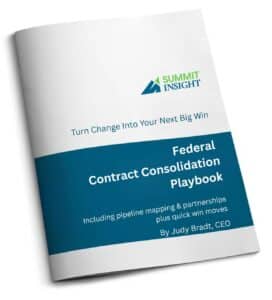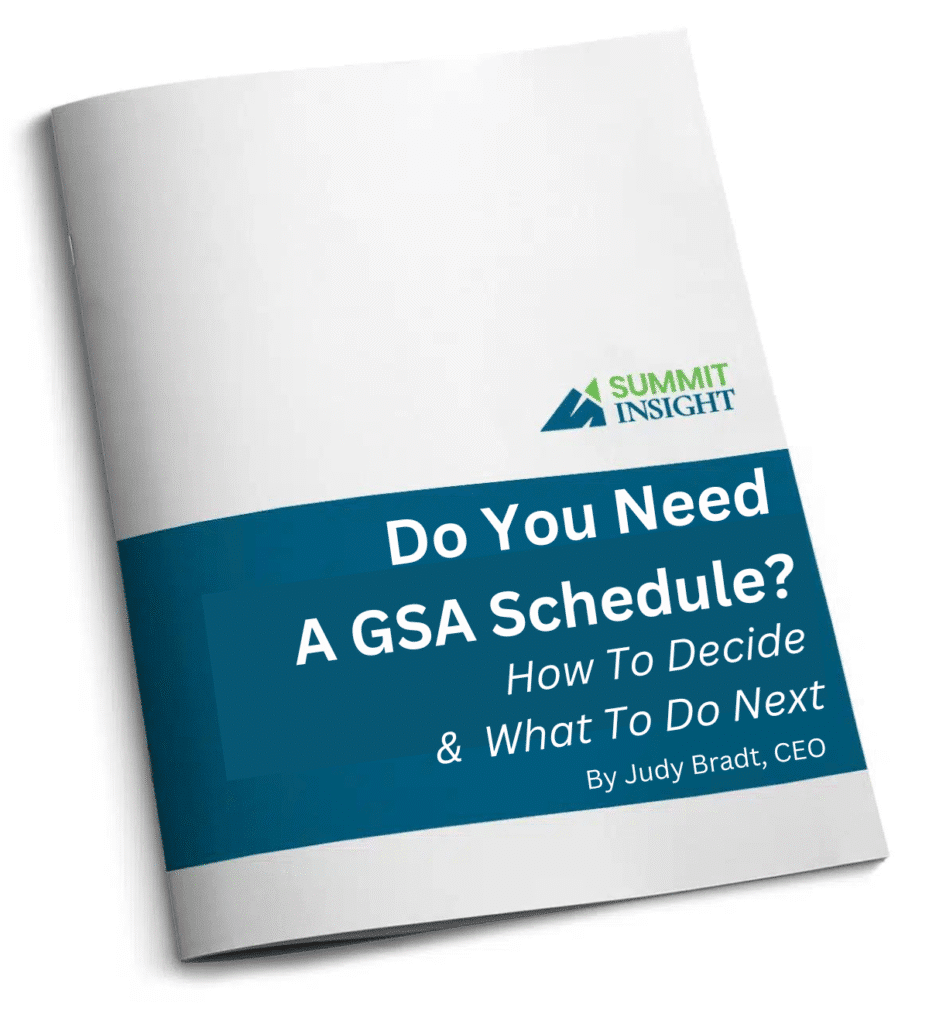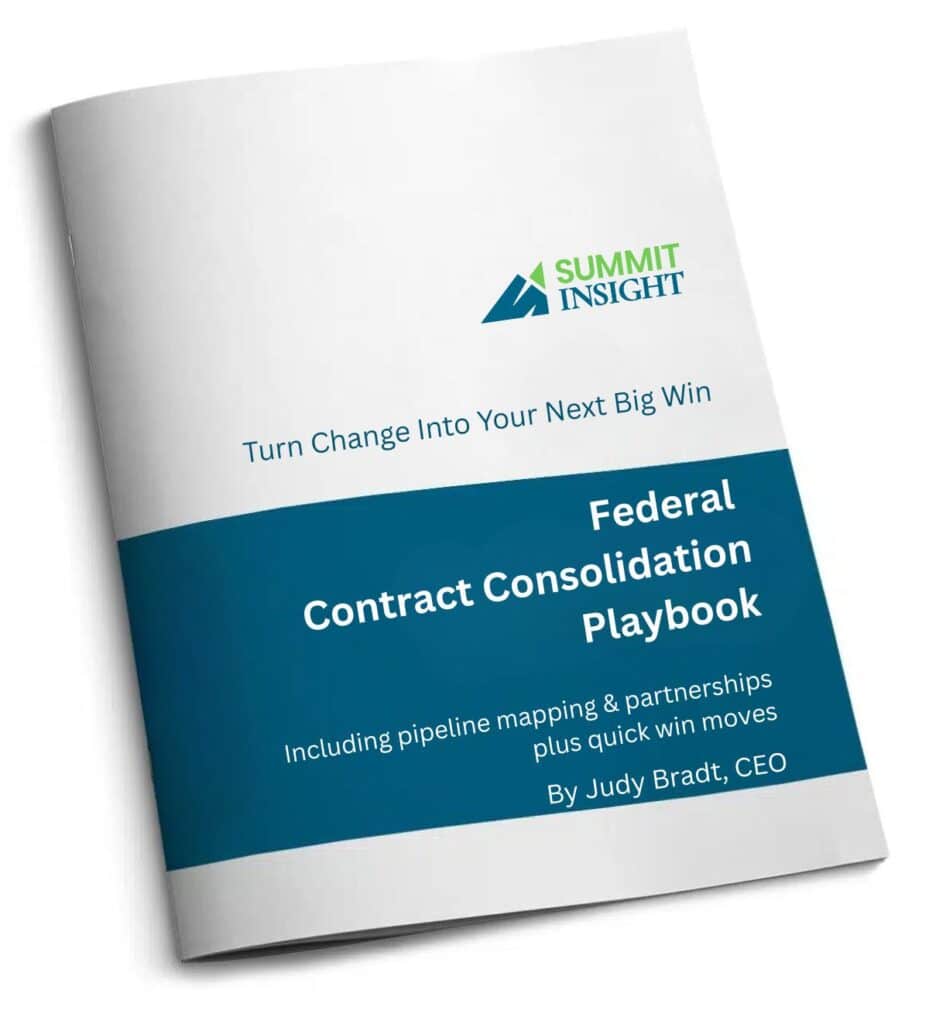Contract consolidation is real—and it’s changing where and how agencies buy. That alone doesn’t mean everyone needs a GSA Schedule right now. A Schedule is a vehicle, not a strategy. In FY26, the winning move is fit: the right buyers, right timing, and real readiness. This guide helps you make a confident yes/no call—and if “yes,” how to do it right.
The 60‑Second Answer
If you can name 5–10 Federal program offices (not just agencies or departments) and individual humans who work there who already buy products or services like yours through GSA Schedules (or plan to), and you have the past performance, pricing, and people to maintain (and sell from) that contract, a Schedule can be an easy button for sales.
If you haven’t done that research, and can’t name individual Federal human purchasers — or you’re counting on “build it and they will come” — I suggest you hit pause.
Seriously? Yup.
The initial pursuit alone of a GSA Schedule Contract takes a bucketload* of time and money — no matter how you do it — before your first sales is even possible through that contract. Before you shell out *thousands of dollars and 6-12 months of time and countless hours of effort* just to get to contract award…invest just a little in getting your research done first.
That includes analyzing past Federal contract award data as well as researching, tracking down, and talking to actual buyers. If that sounds like too much work…then you really don’t want to get a GSA Schedule.
Because while it might be an “easy” button for buyers, making that sale takes a truckload more work than most vendors realize.
Don’t believe me? Here’s the data: In any given year, 60% of GSA Schedule Contract holders win zero revenue. If that doesn’t give you disturbing kind of chills…it should.
How Consolidation Changes the Math in FY26
- More spend via fewer (and larger) vehicles. Executive Order 14240 on Efficient and Effective Federal Contracting directed agencies to make more use of established contract vehicles—such as the GSA Multiple Award Schedule (MAS), Government-Wide Acquisition Contracts (GWACs), and Best-in-Class contracts — to simplify purchasing, reduce paperwork, minimize protest risk, and provide pre-negotiated pricing and terms.
Lining up your company on the vehicles your chosen buyers are directed to use isn’t just convenient. This strategic choice shows you’re listening to Federal priorities, and communicates your commitment to be their trusted partner in achieving them.
- Access ≠ success. Just because someone can buy from you doesn’t mean they will. You still need visibility, credibility, and positioning.
- Sequence matters. Many firms win as subs first, validate pricing and performance, then prime through a Schedule with existing demand.
The WIRED© Decision Framework (for GSA)
Use our WIRED framework to decide “Now, Later, or No.”
- W — Who Buys (and How): List 5–10 specific program offices. Confirm if they use Schedules today. Identify NAICS, SINs, and nearby vehicles.
- I — Investment & Internal Capacity: Budget 120–200 hours for the offer process and 4–8 hours/month to maintain thereafter. Who owns it? What gets deprioritized?
- R — Readiness & Risk: Past performance, certifications, labor categories/SIN mapping, T&Cs, and compliance posture. Any gaps?
- E — Economics & Pricing: Can you price competitively and sustainably across the contract term? Do you have a defensible build‑up and discounting logic?
- D — Demand & Distribution: Named buyers, teaming partners, and a plan to drive task orders via market touches and micro‑engagements—not hope.
Validate Demand Before That Proposal!
- Identify the offices. Then talk to the people who work there. Use recent contract award data as a starting point to confirm your players at all the layers. Research the vehicles they have been using to buy what you do. Then follow up with in-person conversations to get the insider’s take on the contract vehicles they’re going to use moving forward in FY2026.
- Map the vehicle pathway. If your buyers use Schedules for 40–70% of the work you perform or the products you offer to government, good sign. If not, consider GWACs, other agency IDIQs, or subcontracting first.
- Consider how teaming may provide traction. No one is going to hand you their pipeline—but if you bring real value, partners will want you on their teams. Maybe you offer a needed socioeconomic status, a specialized labor category, past performance, or added delivery capacity. In return, you share in the opportunities they are already pursuing under your SINs. That way, their active pipeline helps you earn first past performance, build track record, and get traction in your first year instead of waiting on buyers to find you.

Three Quick Outcomes
Now: You have strong buyer pull, readiness, and budget alignment.
Your past contract research aligns with clear demand you’re hearing from individual Federal buyers and program staff, your core offerings map cleanly to one or more MAS SINs, and you can show past performance and pricing support today. Within your company, you have a point person for contract administration and compliance: someone who can assemble the content and prepare your proposal, support negotiations, and, after award, manage catalog and pricing updates. Company leadership is ready to invest their own time and have committed realistic additional resources and staff effort for sales and marketing for the first 6–12 months of post-award rollout. Outside your company, at least one Federal buyer has indicated they can (and will) place orders via your GSA Schedule this fiscal year, and you have teaming or reseller relationships that can accelerate first wins.Later: Demand looks promising—validate buyers and partners first, and plan and budget for 90–120 days of focused post-award BD).
You’re seeing signals—buyer interest at events, early conversations, or primes asking if you’re “on Schedule”—but you don’t yet have concrete commitments, a mapped SIN strategy, or proof that your price build will be competitive. Rather than charge ahead unprepared, use the next 3–4 months to confirm: (1) which programs buy what you sell via GSA Schedules, (2) which SINs best match what you offer, (3) which partners have pipeline you can support, and (4) whether buyers have funds that match their demand horizon to act. If those checks turn green, you can move forward with confidence.No (for now): No named buyers or weak readiness—use other vehicles and teaming while you build evidence.
If you can’t point to specific buyers, funded programs, or active opportunities that would reasonably transact through MAS, pause your active pursuit of a GSA Schedule. Instead:- Complete the research that will let you focus your sales and marketing on a small number of agencies and offices that buy what you would offer through your Schedule.
- Build demonstrated demand through micro-purchases, simplified acquisitions, pilots, Blanket Purchase Agreements (BPAs) with existing customers, subcontracting with primes that already hold MAS, or agency-specific vehicles that are still being used in your niche.
- Build your pricing support, past performance, and compliance artifacts (the formal documents and records you’ll need as part of your proposal to prove your company meets specific laws, regulations, and contract requirement—and can withstand audit).
That way, once demand is real, you can pursue your MAS without delay.
GSA Schedule Proposal Costs & Timelines
These are broad ranges of what to expect. What happens for your company depends on factors including what experience you have with Federal proposals, and whether you prepare the proposal yourself or engage specialized consulting help.
Proposal Preparation (before submission)
Typical range: 6–12 weeks of focused effort. Expect longer if you’re creating compliance artifacts from scratch or coordinating multiple approvers within your company.
Sample timeline:
Week 1–2 — Positioning & scope: confirm GSA Multiple Award Schedule (MAS) Special Item Numbers (SINs), product/service scope, labor category mapping, discounting posture, and verifying internal business case “why MAS” (named buyers, use cases).
Week 2–4 — Evidence build: assemble past performance, pricing support (basis of estimate, Commercial Sales Practices (CSP) or Transactional Data Reporting (TDR) records, discount policy), Section 508 accessibility evidence/Voluntary Product Accessibility Template (VPAT) (if applicable), Service Contract Act (SCA) wage mappings, and policy excerpts (ethics, quality, cybersecurity as needed).
Week 3–6 — Pricing & docs: price build, labor category qualifications, Terms and Conditions (T&Cs) review, subcontracting plan (if required), representations/certifications confirmation, catalog cross-walks.
Week 5–8 — Internal reviews: QA on all attachments, redaction where needed, approval routing (finance, legal, executive), finalize narratives.
Week 7–12 — Proposal submission to GSA + clarifications: once you send your proposal, it’s normal to get questions and need to clarify information prior to negotiation.
Preparation accelerators:
A current price list and discounting policy
Clean past performance write-ups with points of contact.
Ready-to-use artifacts (e.g., VPAT, SCA conformances, Organizational Conflict of Interest (OCI) statement).
A single empowered owner and a two-person review bench (pricing + contracts).
Common slowdowns:
Missing labor qualifications or inconsistent labor titles across proposals, website, and resumes.
Unclear discounting history (especially if offering CSP vs. TDR).
SCA/union coverage questions that need HR/benefits review.
Policy gaps (e.g., no documented incident response or quality plan).
Government cycle time (their work)
Typical range: 3–9 months from submission to award. Plan for variability by SIN, workload, and season.
What drives the timeline:
SIN complexity & volume: services with SCA, multiple labor categories, or software with Section 508 accessibility needs tend to run longer.
Clarifications & resubmits: each round can add 2–6 weeks.
Seasonality: June–September can slow responses; policy updates can add pauses.
Negotiation scope: bigger price movements or exceptions to standard T&Cs take longer.
How to manage the wait:
Keep a clarification log and pre-approved answers.
Line up post-award tasks (catalog format, modification cheat-sheet, marketing plan) so you launch quickly on day one.
Maintain parallel pipeline (agency vehicles, Blanket Purchase Agreements (BPAs), teaming) so revenue doesn’t hinge on the fastest-case award.
Direct proposal costs (cash outlays to expect)
Most firms: $1,000–$7,500 in direct expenses if you DIY with internal staff; more if you add external QA or specialized help. That outlay might include:
Registrations & fees: System for Award Management (SAM) and SBA Small Business Search: time to update your profiles, apply for or update any small business certifications for which you’re eligible, plus file and renew all required annual state corporate registrations, including the cost of notarized or certified copies.
Pricing & documentation tools: spreadsheet add-ins, catalog builders, redaction/Portable Document Format (PDF) tools, document control.
CPA/legal light touch: Certified Public Accountant (CPA) review for audit-readiness, quick legal alignment on T&Cs, SCA conformance check.
Accessibility/security evidence (as applicable): VPAT creation, lightweight security policy tune-ups (e.g., mapping toward National Institute of Standards and Technology (NIST) Special Publication 800-171 or Cybersecurity Maturity Model Certification (CMMC) if your buyers require it).
Optional external QA/coaching: pay only for gaps you can’t close in-house.
Hidden but real: Re-work costs from inconsistent labor mapping or missing pricing backup; last-minute formatting fixes to resolve rejected attachments.
Opportunity cost (the big one)
Your largest expense isn’t cash—it’s executive and business development (BD) time diverted from pursuits and delivery.
Who’s involved: executive sponsor (price authority), pricing/finance lead, contracts/admin, capture/BD, subject-matter experts (SMEs) for labor qualifications.
Typical internal hours (first-time offer): 100–250 total team hours across 6–12 weeks.
How to value it: multiply realistic hours by a blended internal rate (salary + burden).
Example: 120 hours × $150/hour blended = $18,000 opportunity cost.
Make it count (ROI discipline):
Define Win Conditions up front (e.g., three named buyers + two partner use cases + mapped SINs).
Set pause/exit criteria (e.g., if no buyer validates MAS ordering in 90 days, defer).
Track leading indicators (validated demand, partner commitments, catalog ready) not just “pages completed.”
Quick break-even check (sanity test):
Add Direct Costs + Opportunity Cost = Total Investment.
Using examples: $5,000 cash + $18,000 time = $23,000.
Estimate Year-1 MAS Gross Margin on realistic, validated orders.
If one BPA call order nets $12,000 margin and two micro-purchases net $6,000, Year-1 margin ≈ $18,000.
If Year-1 margin < investment, you need either (a) more validated demand, (b) partner-assisted first orders, or (c) a lower-effort path (teaming/other vehicles) before you proceed.
Putting it together (at-a-glance plan)
Weeks 0–2: Decide “Now / Later / No-for-now” using buyer validation. Name your SINs and artifacts list.
Weeks 2–6: Build pricing + artifacts; lock discounting posture; draft narratives.
Weeks 6–8: QA + approvals; submit.
Months 2–6+: Clarifications/negotiation; prep launch assets in parallel.
Post-award (first 90 days): Publish catalog, train sales, announce to buyers/partners, execute first two orders.
Bottom line: Treat MAS like a pursuit with entry/exit gates, not a paperwork project. The cash costs are manageable; the time is where you win or lose ROI.
Common Pitfalls to Avoid
- “Set and forget.” GSA Schedules require maintenance and active selling.
- Pursuing SINs or labor categories that don’t match what you do best leads to mismatched opportunities and pricing friction.
- No plan to drive demand — aka “sell.” If you can’t list specific Federal contacts in what our Players and Layers Methodology (PALM)(R) calls the End User and Contracting layers, and don’t have (or plan to implement)) a campaign of marketing and sales to reach and woo those buyers consistently year round, don’t pursue a GSA Schedule right now
- Pricing that wins the contract but loses the business. Discounts you can’t afford will haunt you.
The Bottom Line
If you know a GSA Schedule is right for you, remember this:
You’re going to spend time, and you’re going to spend money. All you get to choose is the mix.
Your time — not just yours as the business owner, but also that of your team members, who are likely already working at well over 80% of capacity even before you decided to take on a GSA Schedule proposal and then marketing and sales — is finite.
So, DIY or “Done For You”?
Does it make sense to get a GSA Schedule consultant to help you? Important question! We’ll explore that in my next blog post!
Summit Insight doesn’t provide proposal services. You couldn’t pay me enough money to write a Federal proposal. That’s not because they’re not important…but because I would be terrible at it!
I connect my clients with my awesome referral partners who have win rates well above 80%.
Book a Federal Business Breakthrough Session
In 30 minutes, we’ll pinpoint your best next steps for making the GSA Schedule Decision. We can confirm how much buyer demand you’re really seeing, how to verify that, and lay out the questions you need to ask yourself and your team on the road to this critical choice.
No pitch—just clarity and a short action plan.
Not ready to talk? One of these complimentary guides might help.



